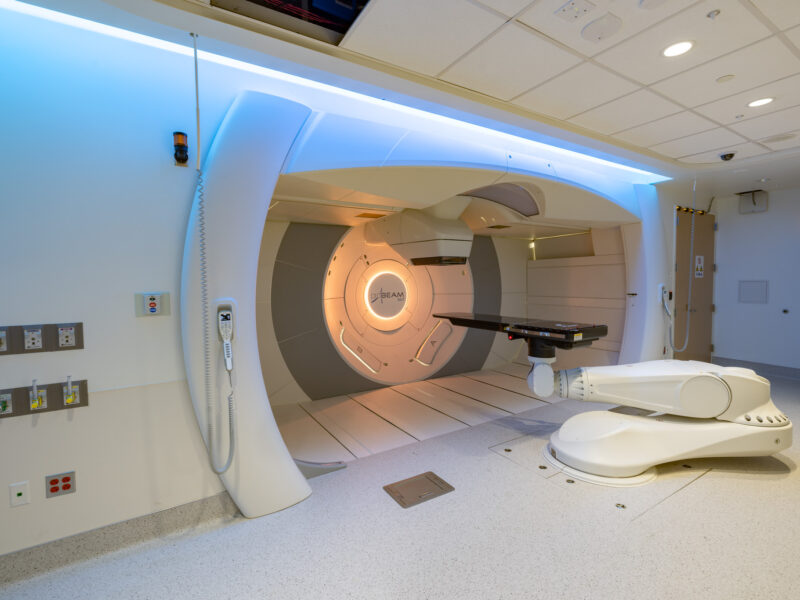Making Stem Cell Transplantation Work for Sickle Cell Disease
Making Stem Cell Transplantation Work for Sickle Cell Disease https://pediatricsnationwide.org/wp-content/themes/corpus/images/empty/thumbnail.jpg 150 150 Mary Bates, PhD Mary Bates, PhD https://secure.gravatar.com/avatar/c6233ca2b7754ab7c4c820e14eb518c8?s=96&d=mm&r=g- December 12, 2017
- Mary Bates, PhD
New regimen offers a promising approach for unrelated donor transplants.
Sickle cell disease (SCD) is a blood disorder affecting 1 in every 500 African-American newborns. It is characterized by extreme pain and decreased longevity.
Currently, the only cure for SCD lies in hematopoietic stem cell transplantation. A well-matched sibling donor is needed for the best chance of a successful transplant. Unfortunately, most children with SCD do not have a matched sibling donor without the disease limiting the number of patients receiving transplants.
In a report published in the journal Biology of Blood and Marrow Transplantation, researchers at Nationwide Children’s used a new medication regimen in SCD patients undergoing stem cell transplants from unrelated donors.
One issue with transplants from unrelated donors is that they are often associated with serious complications such as graft versus host disease.
“It’s like replacing one disease with another,” says Hemalatha Geetharani Rangarajan, MD, a physician in the Division of Pediatric Hematology, Oncology and Blood & Marrow Transplant at Nationwide Children’s and one of the study’s authors.
Dr. Rangarajan and colleagues report on the first four patients with severe SCD that received stem cell transplants from unrelated donors with a new medication regimen designed to encourage donor engraftment while preventing graft versus host disease. The regimen consisted of busulfan, fludarabine and anti-thymocyte globulin. A single dose of post-transplant cyclophosphamide, along with tacrolimus and mycophenolate mofetil, was used for prophylaxis against graft versus host disease.
“The most important aspect is the novel use of post-transplant cyclophosphamide for graft versus host disease prophylaxis,” says Dr. Rangarajan. “We used a single dose of cyclophosphamide, which has never been done before in SCD transplant using an unrelated donor. None of the patients treated in this study had graft versus host disease post-transplant.”
Of the four patients, three engrafted and were cured of SCD without any evidence of graft versus host disease. The fourth patient had primary graft failure attributed to low stem cell content of the graft.
Dr. Rangarajan says the early data is encouraging but needs to be corroborated in more patients.
“So far here at Nationwide Children’s, seven patients with SCD have been treated using unrelated donor transplants,” says Dr. Rangarajan.
Nationwide Children’s is the only pediatric hospital in Ohio participating in the Sickle Cell Transplant Alliance for Research (STAR) Network. As part of the STAR Network, Nationwide Children’s is conducting more trials testing different agents against graft versus host disease in stem cell transplants in SCD patients.
Reference:
Rangarajan HG, Abu-Arja R, Pai V, Guilcher GMT, Soni S. Outcomes of Unrelated Donor Stem Cell Transplant with Post-Transplant Cyclophosphamide for Graft-Versus-Host Disease Prophylaxis in Patients with Severe Sickle Cell Disease. Biology of Blood and Bone Marrow Transplantation. 20 Oct 2017. [Epub ahead of print]
Doi: 10.1016/j.bbmt.2017.10.030.
About the author
Mary a freelance science writer and blogger based in Boston. Her favorite topics include biology, psychology, neuroscience, ecology, and animal behavior. She has a BA in Biology-Psychology with a minor in English from Skidmore College in Saratoga Springs, NY, and a PhD from Brown University, where she researched bat echolocation and bullfrog chorusing.
-
Mary Bates, PhDhttps://pediatricsnationwide.org/author/mary-bates-phd/December 27, 2016
-
Mary Bates, PhDhttps://pediatricsnationwide.org/author/mary-bates-phd/
-
Mary Bates, PhDhttps://pediatricsnationwide.org/author/mary-bates-phd/
-
Mary Bates, PhDhttps://pediatricsnationwide.org/author/mary-bates-phd/
- Posted In:
- In Brief






